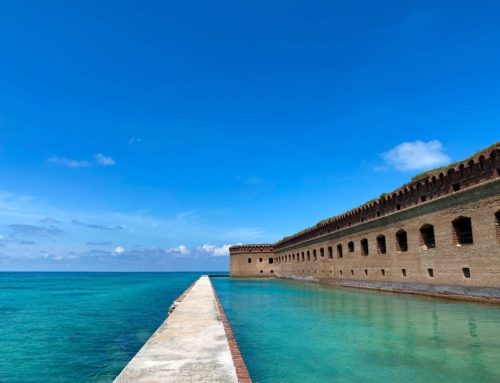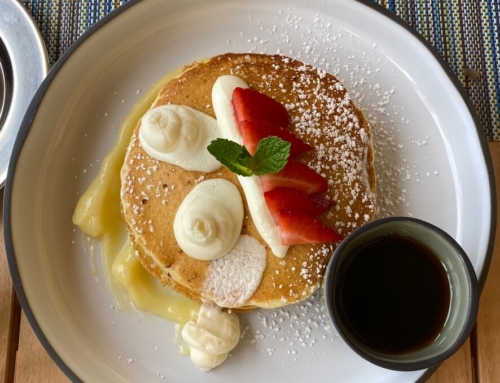Amsterdam is one of my favorite cities in Europe. There’s so much more to it than the red light district. I loved Amsterdam because of its progressive culture, picturesque canals, cobblestone streets, colorful tulips, and engaging art museums. I could see myself living in Amsterdam. Maybe someday. I’ll keep you updated. 😉
Here are 8 reasons to visit (or move to) Amsterdam:
Dutch History
I learned a lot of surprising things about Dutch history while visiting Amsterdam. For example, many people are familiar with the British Empire, but the Dutch were just as powerful. Don’t believe me? Read about the Dutch Golden Age (1581-1672) when the Dutch were world leaders in trading, science, military, and art. The Dutch founded the stock exchange during this time.
Also during this Golden Age, the Dutch settled in New York City and named it ‘New Amsterdam.’ The island of Manhattan was later renamed to New York when the British settled there in 1664. They named it after the Duke of York.
In addition to New York, the Dutch settled in present day New Zealand. Historians believe that the country was named after the Zeeland province in the Netherlands.

Jordaan neighborhood in Amsterdam
Art Museums
I visited THREE art museums in Amsterdam, and I was still hungry for more! My favorite was the Moco Museum.
Moco Museum
The Moco is a small museum inside a renovated house. It specializes in modern and contemporary art. The majority of its art offered subtle (or direct) commentary on social issues. When I visited, there was a terrific Banksy exhibit. It was named ‘Laugh Now’ after one of his most famous pieces. Banksy’s iconic ‘Girl With Balloon’ picture was on display here, too.
I also really enjoyed the Icy & Sot exhibit. Icy & Sot are American brothers and their art aims to encourage more restrictive gun laws in the United States. Finally, the Moco has a lovely outdoor garden area that’s filled with sculptures. You can learn more about the Moco Museum here.

‘Girl With Balloon’ at Moco
Van Gogh Museum
The Van Gogh Museum is a MUST SEE. It features some of Van Gogh’s most famous works including ‘The Potato Eaters,’ ‘Sunflowers,’ and ‘The Bedroom.’ You can learn about Van Gogh’s personal life through his hand-written letters to his parents. They even have the letter that he wrote to them right after he cut off his ear.
Because Van Gogh was so obsessed with creating art, he often neglected his mental and physical health, and this ultimately led to his demise. The museum features an exhibit that uses colorful lazers, mirrors, and props to depict Van Gogh’s intense and passionate career.
Rijksmuseum
When I visited the Rijksmuseum, I was told that my ticket was valid for the day and that I could come and go as I pleased. Once I entered the museum, I understood why. The Rijksmuseum is enormous. It’s commonly referred to as the ‘Museum of the Netherlands’ because its focus is Dutch art and history. You can see priceless pieces of art by Vermeer and Rembrandt, including Rembrandt’s famous painting, ‘The Night Watch.’ The museum even has its own café so that visitors can look at art all day long without having to leave for lunch.

Rijksmuseum
World-famous canals
Amsterdam’s canal network is as intricate as it is picturesque. I definitely recommend a canal tour to learn more about the fascinating history of how the canals were built and the many purposes they serve (besides being charming backdrops for photos).
Pro tip: Some tours allow you to bring your own food and drink. I recommend bringing snacks and a bottle of wine on a late afternoon tour so that you can enjoy a fabulous happy hour on a boat for the daytime sightseeing cruise price.

Canal in Jordaan neighborhood
Dutch Architecture
In Amsterdam, there are hooks on the front of houses to bring heavy pieces of furniture, such as pianos, to the second and third floors of a home. (There are no elevators. These are historic homes!) You simply raise the furniture using ropes then swing it inside through the windows. These apartments are slightly tilted forward so that the furniture doesn’t hit the side of the building as it’s being lifted. In fact, it’s very common for Dutch apartments to be lopsided. This is because they’re built on top of man-made wood pilings that have moved over time. The houses are slowly starting to shift and bend because of the uneven ground. My tour guide told us that if he puts an orange on the floor on one side of his kitchen, it will roll to the other!

Jordaan neighborhood – You can see hooks on the two buildings on the right
Dutch cuisine
Amsterdam is a multicultural city and home to a wide variety of international cuisine. There are so many people in Amsterdam who hail from other countries that in 2012 people of Dutch ancestry made up less than half of the city’s population.
A popular international fast food is kebab. In the tourist areas, there are kebab stands on every corner. They’re popular as a late night snack after a wild night of partying.

Lovely morning in Amsterdam
A beloved Dutch snack is patats (thick cut fries) and mayonnaise. Patats can be topped with peanut sauce, curry sauce, chopped onions, or all of the above. Ketchup is overrated (unless it’s curry ketchup). For more information about Dutch fries and to discover the legendary ‘friet vs. patat’ debate, you should definitely visit this website. It translates all the Dutch fry toppings into English and features a short video about popular Dutch snacks.

Patats/friets and mayonnaise
Dutch people love poffertjes. Poffertjes are fluffy mini pancakes, about the size of a quarter. In winter, Dutch food stands will sell warm poffertjes topped with butter and powdered sugar. Recently, Americans have caught on to the delicious mini pancakes and have been eating them in a bowl with milk as ‘pancake cereal.’

Poffertjes with banana and nutella
Another popular Dutch dessert is the stroopwafle. Stroopwafles are two super-thin waffles glued together with stroop syrup. They vary in size, but typically the freshly made waffles are large and the processed cookie-like waffles are small.
Tulips
Who doesn’t love tulips!? The Netherlands export more tulips than any other country in the world. I recommend visiting the Bloemenmarkt (flower market) and buying yourself some Dutch bulbs to grow at home.

Flower market in Amsterdam
Bicycle-friendly
If you enjoy cycling, Amsterdam is the city for you! Most Dutch people use bicycles as their main source of transportation. If you like getting some exercise and reducing your carbon footprint, visit (or move to) Amsterdam!

Hundreds, if not thousands, of bicycles parked outside Amsterdam’s Centraal Station
Progressive Culture
Feminist Views
Calling all feminists! The Netherlands are one of my favorite countries in the world because of their progressive culture. The Dutch celebrated immigrants, the gay community, and women long before most of their neighboring countries.
In the 1600s, Dutch women had significantly more rights than other European women. Dutch women were responsible for domestic chores as well as the household’s finances. This was unheard of in Europe at the time. Additionally, widowed Dutch women were allowed to inherit property and manage finances on behalf of their late husbands.
Religious Views
In the Netherlands today, more than half of the country’s residents consider themselves to have no religion. In fact, atheism is considered non-controversial by Dutch people.
The decline in organized religion initially caused financial hardship for the Dutch churches. To keep the churches open and profitable, many have been converted into restaurants or night clubs. Yes, you read that right. You can twerk freely in front of the Lord himself. Curious to know more? You can read about it here.

Beautiful Amsterdam
Safe Injection Sites
Finally, the Dutch government provides drugs to people who are addicted. They are administered in safe injection sites. This policy is costly but it pays for itself in tourist revenue. How? Keeping drug addicts off the streets increases property values and tourism. It may sound like an empathetic and compassionate policy, but it’s actually monetarily motivated. Addicts on the streets is bad for tourism and tourism is a lucrative part of Amsterdam’s economy. Nevertheless, this policy keeps everyone safe, including users, and I feel strongly that we should adopt this practice in the States.
Conclusion
Amsterdam is a safe and progressive city with a high standard of living. It boasts beautiful canals, tulips, bicycles, and charming cobblestone streets. There is an abundance of art, culture, and international cuisine. I could definitely see myself living in Amsterdam. Someday.
Have you been to Amsterdam? I’d love to hear about your experience! Leave a comment below.
– Travel Alli






Hi! Thanks a lot for following Thoughts of SheryL!
You have a great blog! 🙂